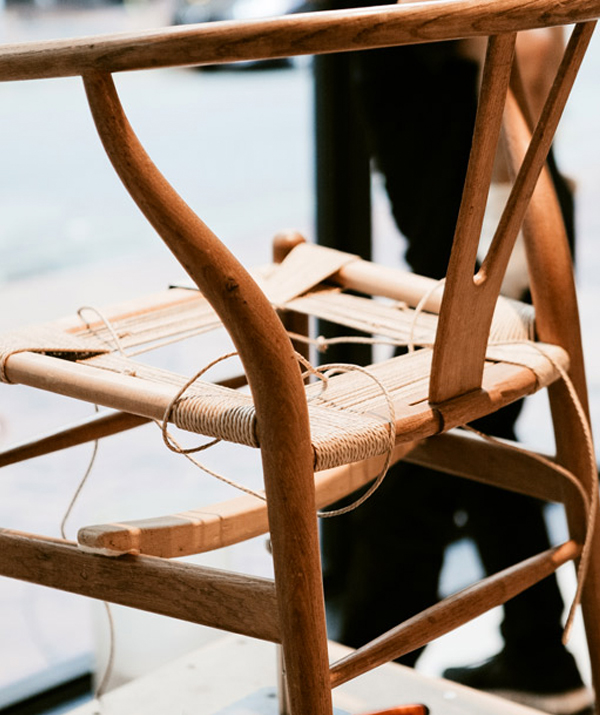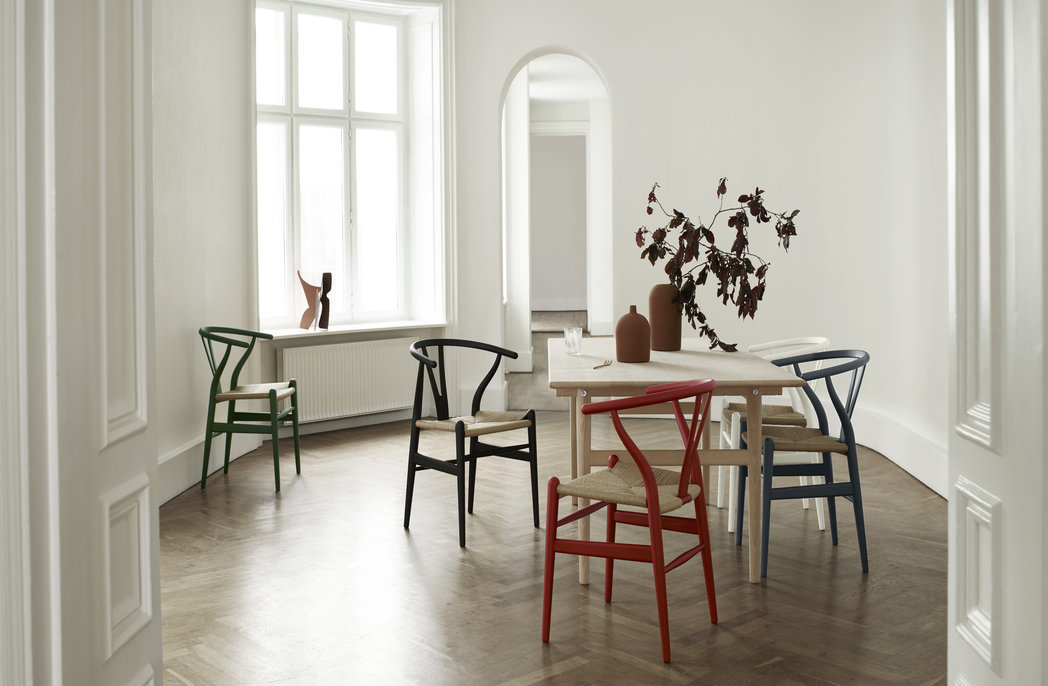
Weaving magic
Share
Images appear courtesy www.cultdesign.com.au.
Carl Hansen & Son is a name well-known in the world of design. The Danish company produces beautiful furniture pieces that are the epitome of cool Scandinavian design – all smooth and sleek, modern and functional – and so the invitation to the Melbourne Cult showroom to see a demonstration of the weaving technique employed on the iconic Wishbone chair was an opportunity too good to miss.
This week Cult has hosted workshops in its showrooms affording a glimpse into the world behind the design of one of the world’s best-loved chairs: the C24 Wishbone chair. Morten Larsen, Carl Hansen & Son’s sales director for Hong Kong, south-east Asia and Australia, accompanied Benny Hammer Larsen on the journey to Australia to help show and tell the story of the Wishbone and explain the processes behind the manufacture of this splendid chair. Hammer Larsen has been weaving his magic on the Wishbone at Carl Hansen & Son for some 20 years and now, as a master craftsman, he travels the globe to share his experience and teach others his techniques.
Created in 1950 by Hans Wegner, the Wishbone chair has stood the test of time and is a modern day icon in a sea of disposable furniture pieces. To say that the Wishbone has sustainability at its heart is almost too simplistic. The frame and the woven paper cord for the seat are both made of wood and the same making processes utilised in 1950 are still in practice today. The seat is hand woven and generally takes about an hour to complete by a craftsmen such as Hammer Larsen, so there are approximately seven made per day from one maker.
Hammer Larsen is a master and watching his deft movements at the workshop, weaving the cord to and fro on the Wishbone frame, was an education in precision and attention to detail. He worked in lengths of 10 to 12 metres of paper cord at a time, which saw the seat began to take form, but it wasn’t as easy as it looked. The strength required to sustain the process and ensure perfect tension was difficult – I know I tried it. For a few minutes, I was a trainee on the floor of the Carl Hansen & Son factory floor, but for the real workers it takes some three months of training to weave their magic on the Wishbone.
In a time when near enough is good enough, it’s gratifying to see that Carl Hansen & Son appreciates its products, embraces the process of the hand-made and values its craftsmen… but then, that’s what makes the Wishbone special, isn’t it?
Article by (inside) co-editor Jan Henderson.


















